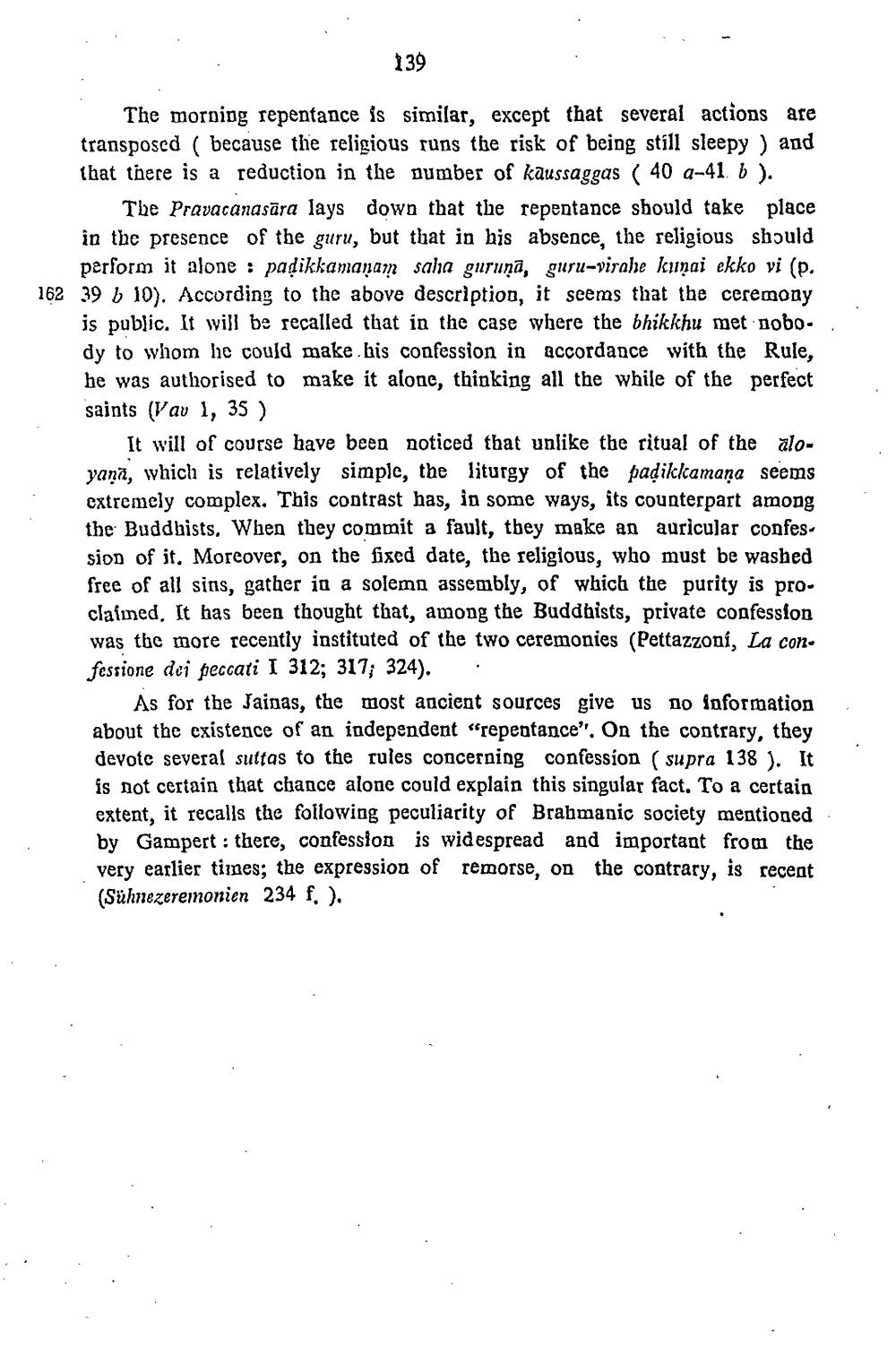________________
139
The morning repentance is similar, except that several actions are transposed (because the religious runs the risk of being still sleepy) and that there is a reduction in the number of kaussaggas ( 40 a-41 b ). repentance should take place absence, the religious should guru-virahe kunai ekko vi (p.
The Pravacanasara lays down that the in the presence of the guru, but that in his perform it alone: padikkamanam saha guruna, 162 39 b 10). According to the above description, it seems that the ceremony is public. It will be recalled that in the case where the bhikkhu met nobody to whom he could make his confession in accordance with the Rule, he was authorised to make it alone, thinking all the while of the perfect saints (Vav 1, 35)
It will of course have been noticed that unlike the ritual of the aloyana, which is relatively simple, the liturgy of the padikkamana seems extremely complex. This contrast has, in some ways, its counterpart among the Buddhists. When they commit a fault, they make an auricular confession of it. Moreover, on the fixed date, the religious, who must be washed free of all sins, gather in a solemn assembly, of which the purity is proclaimed. It has been thought that, among the Buddhists, private confession was the more recently instituted of the two ceremonies (Pettazzoni, La confessione dei peccati I 312; 317; 324).
As for the Jainas, the most ancient sources give us no information about the existence of an independent "repentance". On the contrary, they devote several suttas to the rules concerning confession (supra 138 ). It is not certain that chance alone could explain this singular fact. To a certain extent, it recalls the following peculiarity of Brahmanic society mentioned by Gampert: there, confession is widespread and important from the very earlier times; the expression of remorse, on the contrary, is recent (Sühnezeremonien 234 f ).




